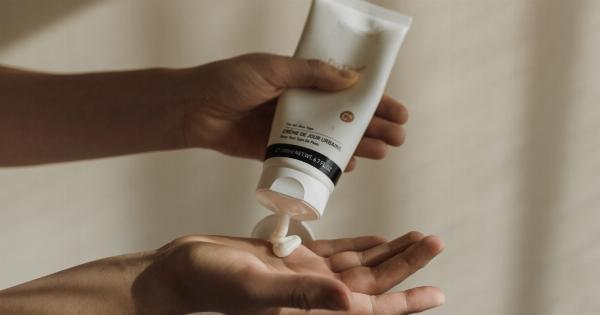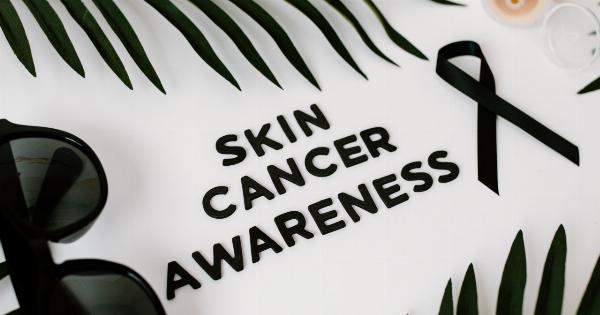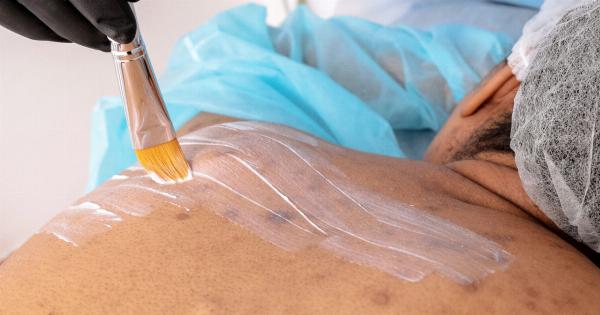Stretch marks, also known as striae, are a common skin condition that affects individuals of all ages and genders. They often appear as streaks or lines on the skin and can vary in color from white to pink, red, or purple.
While stretch marks can occur on any part of the body, they are most commonly found on the abdomen, thighs, hips, breasts, and upper arms.
Causes of White Stretch Marks
Stretch marks form when the skin stretches or shrinks rapidly due to various factors. The sudden stretching causes the collagen and elastin fibers in the skin to rupture, resulting in the formation of stretch marks.
Some common causes of white stretch marks include:.
1. Pregnancy
Pregnancy is one of the most common causes of stretch marks in women. As the belly expands to accommodate the growing baby, the skin stretches, leading to the formation of stretch marks. Typically, these marks appear on the abdomen, hips, and breasts.
2. Rapid Weight Gain or Loss
Sudden weight gain or loss can put a lot of stress on the skin, causing it to stretch or contract rapidly. This can occur due to factors such as obesity, intense workouts, or certain medical conditions.
Stretch marks related to weight fluctuations are often seen on the abdomen, thighs, and upper arms.
3. Puberty
Adolescence is a time of rapid growth and development, and hormonal changes during puberty can trigger the formation of stretch marks. These marks commonly appear on the hips, thighs, buttocks, and breasts.
4. Genetic Predisposition
Some individuals are genetically more prone to developing stretch marks. If your parents or close relatives have stretch marks, there is a higher likelihood that you may also experience them.
5. Corticosteroid Use
Topical or oral corticosteroids, commonly used to treat various skin conditions like eczema and psoriasis, can weaken the skin’s elasticity. Prolonged use of these medications can increase the likelihood of developing stretch marks.
6. Medical Conditions
Certain medical conditions, such as Marfan syndrome and Cushing’s syndrome, can contribute to the development of stretch marks.
These conditions affect the production of collagen and can weaken the skin’s elasticity, making it more prone to stretch marks.
Effective Ways to Eliminate White Stretch Marks
1. Moisturize Regularly
Regularly moisturizing your skin can help improve its elasticity and reduce the appearance of white stretch marks. Opt for moisturizers rich in ingredients like cocoa butter, shea butter, almond oil, or coconut oil.
Apply the moisturizer to the affected areas and massage gently in circular motions to promote better absorption.
2. Exfoliate the Skin
Exfoliating the skin can help remove dead skin cells and stimulate collagen production, which may help reduce the visibility of white stretch marks. Use a gentle exfoliating scrub or brush on the affected areas while in the shower.
Be sure to be gentle and not to cause any irritation to the skin.
3. Use Topical Treatments
Several topical treatments can help fade white stretch marks. Look for products that contain ingredients like retinol, hyaluronic acid, vitamin C, or glycolic acid. These ingredients can promote collagen production and improve skin texture.
Apply the topical treatment to the white stretch marks as directed on the product label.
4. Laser Therapy
Laser therapy is a popular option for reducing the appearance of white stretch marks. This treatment uses focused beams of light to stimulate the production of collagen and promote the growth of new, healthy skin cells.
Laser therapy can be expensive and may require multiple sessions for optimal results.
5. Microneedling
Microneedling is a procedure that involves using a roller or a device fitted with tiny needles to create micro-injuries on the skin’s surface. These micro-injuries stimulate collagen and elastin production, helping to fade stretch marks over time.
Microneedling should be done by a trained professional to ensure safety and effectiveness.
6. Chemical Peels
Chemical peels involve applying a solution to the skin, which causes the outer layer to peel off, revealing smoother, healthier skin underneath.
Chemical peels can help improve the appearance of white stretch marks by promoting collagen production and enhancing skin texture. It’s important to consult with a dermatologist before undergoing a chemical peel to determine the most suitable option for your skin type.
7. Dietary Changes
Maintaining a healthy diet can play a significant role in improving skin health and reducing the appearance of white stretch marks. Ensure your diet includes foods rich in vitamins A, C, and E, as well as zinc and silica.
These nutrients promote collagen production and support skin elasticity. Additionally, staying hydrated by drinking an adequate amount of water each day can help keep your skin moisturized and supple.
8. Massage Therapy
Regularly massaging the affected areas can improve blood flow and promote the healing process. Use a gentle circular motion and apply a moisturizer or oil to reduce friction.
Massaging the skin can make it more pliable and help fade the appearance of white stretch marks over time.
9. Camouflage with Makeup
If you’re looking for a temporary solution to hide white stretch marks, you can use makeup to camouflage them. Choose a long-lasting, full-coverage concealer that matches your skin tone and apply it to the stretch marks.
Gently blend the concealer until it seamlessly blends with the surrounding skin. Set the makeup with a light dusting of translucent powder for a natural finish.
10. Embrace Your Body
While there are various effective ways to reduce the appearance of white stretch marks, it’s important to remember that they are natural and extremely common.
Learning to embrace and love your body, including the imperfections, can help build self-confidence and promote a positive body image.































